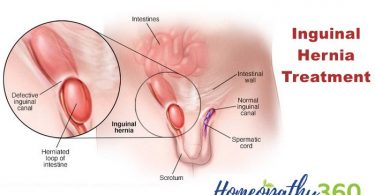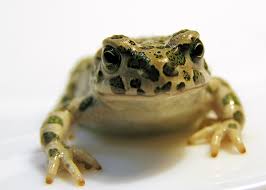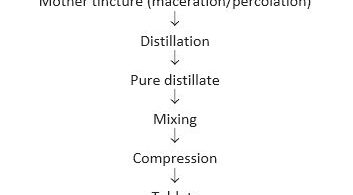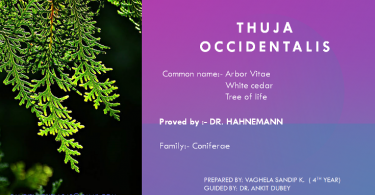Abstract– Tinea corporis is a fungal infection of glabrous skin, except palms, soles and groins. These are annular/ arcuate lesions with relatively clearing in the center and an active periphery. Case summary – An 11 year boy with teniea corporis on right axilla reported for homoeopathy treatment. Bacillinum1m was prescribed as an antimiasmatic medicine followed by bacillinum 10m with complete recovery from symptoms. The case report with photographic evidence shows the effectiveness of bacillinum in case of tinea corporis.
Introduction – Tinea is a dermophytic fungal infection. A typical lesion of tinea is an annular or arcuate plaque which spreads centrifugally. The edge is active, showing papulovesiculation, postulation, scaling, while the center is usually relatively clear. The diagnosis is done on the basis of morphology of typical lesion.[1] Conventional treatment includes topical agents like azole derivatives, allylamines and related compounds etc.
Patient’s history –
Name –y, Age -11 years, occupation-student
History of present complaint– Patient reported for itching in axilla with some eruption since 20 days, which is aggravated by profuse sweating.
Past history- Recurrent history of allergic to cold since childhood.
H/o Pityriasis alba- at age of 8 years.
H/o Typhoid- 2 years back.
Family history– Father- Diabetes, Tuberculosis
Paternal Grand father- Carcinoma?
Paternal Grand mother- High blood pressure.
Physical peculiarities – Child has great desire for spicy food+4, profuse sweat on forehead+2, thermally patient is chilly+2.
Mentals– He is very restless+4, genius, very active+4 and participates in all activities
Physician’s observation – Restlessness was very marked, child was very brainy and quick to answer, and height was short.
Diagnosis – The diagnosis is done on the basis of morphology of typical lesion. A typical lesion of tinea is an annular or arcuate plaque which spreads centrifugally. The edge is active, showing papulovesiculation, postulation, scaling, while the center is usually relatively clear.[1]
Case analysis and Evaluation [2] –
| Symptoms | Classification | Common/uncommon | Intensity | Miasmatic analysis |
| Restlessness | Mental general | Characteristic | ++++ | Psora,syphilitic ,tuberculinum |
| Active | Mental general | Characteristic | ++++ | Psora,syphilitic ,tuberculinum |
| Intelligent | Mental general | Characteristic | ++++ | Psora,syphilitic ,tuberculinum |
| Desire -spicy | Physical general | Characteristic | ++++ | Psora,sycotic,tuberculinum |
| Sweat profuse | Physical general | Characteristic | ++ | Sycotic,syphilitic,tuberculinum |
| Tinea corporis | Particular | Common | +++ | Sycotic,syphilitic |
| Height short | Physical general | Characteristic | ++ | Sycotic |
It was very clear that child has typical presentation of remedy tuberculinum, restlessness of patient, susceptibility towards allergic to cold and family history all indicates tubercular miasm.[3] Repertorization was done using synthesis repertory.[4]
Reason for selection -In this case tuberculinum was very close to bacillinum but on the basis of short height, history of typhoid, history of pityrisisis alba, bacillinum was given, as bacillinum is more sycotic than tuberculinum. Potency 1M was chosen as nosodes work wonderful in higher potencies.[2]
Final selection of remedy – Bacillinum 1M/ 1 dose.
Homoeopathic literature– Dr. Burnett has shown that ringworm of the scalp and pityriasis versicolor on the body are indications of tubercular diathesis and they respond to this remedy.[4] Antimiasmatic remedy is useful in treatment of cases where they are activated or when gets stalled in case and there is miasm present. A family history of certain disease pattern helps to confirm, the presence of an active or dormant miasm.[5]
| PRESCRITION | JUSTIFICATION | |
| 10/7/2020 | Bacillinum 1M stat Rubrum30/TDS/ 15 days | Shape of lesion, tubercular family history Acc.to mental general and past history of pityriasis alba and on the basis of repertorization. |
| 25/7/2020 | Rubrum /TDS/ 15 days | Itching ameliorated, no change in size of lesion. |
| 12/8/2020 | Bacillinum1M stat Rubrum /TDS/15 days | As there was no further improvement medicine was repeated.[2] |
| 30/8/2020 | Bacillinum 10M stat Rubrum/TDS/ 15 days | Potency was increased as case came to stand still.[2] |
| 15/9/2020 | Rubrum/TDS/ 15 days | No itching present, size of eruptions reduced. |
| 30/9/2020 | Rubrum/TDS/ 10 days | Completely resolved. |
Before treatment After treatment
[Declaration of patients consent – a written consent was given by the parents of child for sharing images to the journal.]Conclusion – In the case presented here, The antimiasmatic remedy was given to the patient with complete disappearance of symptoms. It also confirms the usefulness of nosodes as antimiasmatic medicines and validates our literature.
References –
- Khanna N. Dermatology & sexually transmitted Diseases. 3rd edition. Noida: Elsevier; 2002
- Sarkar B.K. Hahnemann’s Organon of Medicine.4th Reprint edition. Delhi: Birla Publication Private Limited; 2003.
- Banerjea K.S. Miasmatic priscribing. 2nd extended edition. NewDelhi: B.jain publisher(P) Ltd; 2006.
- RADAR.version 10.5.Belgium:archibel.2009.
- Murfy R. lotus materia medica .2nd revised edition. NewDelhi: Jain Publisher(P)Ltd; 2002
About Author
Dr .SoniaTuteja, Ph.D(Hom.), P.G Coordinator, Associate Professor, Department of Materia Medica, S.K.H.M.C & R.C, Jaipur, Rajasthan.
Dr. Mehak, M.D (PGR), department of Materia Medica, S.K.H.M.C & R.C, Jaipur, Rajasthan.





